Self-deportations. Factory layoffs. Military zones. How Trump is transforming the U.S.-Mexico border.
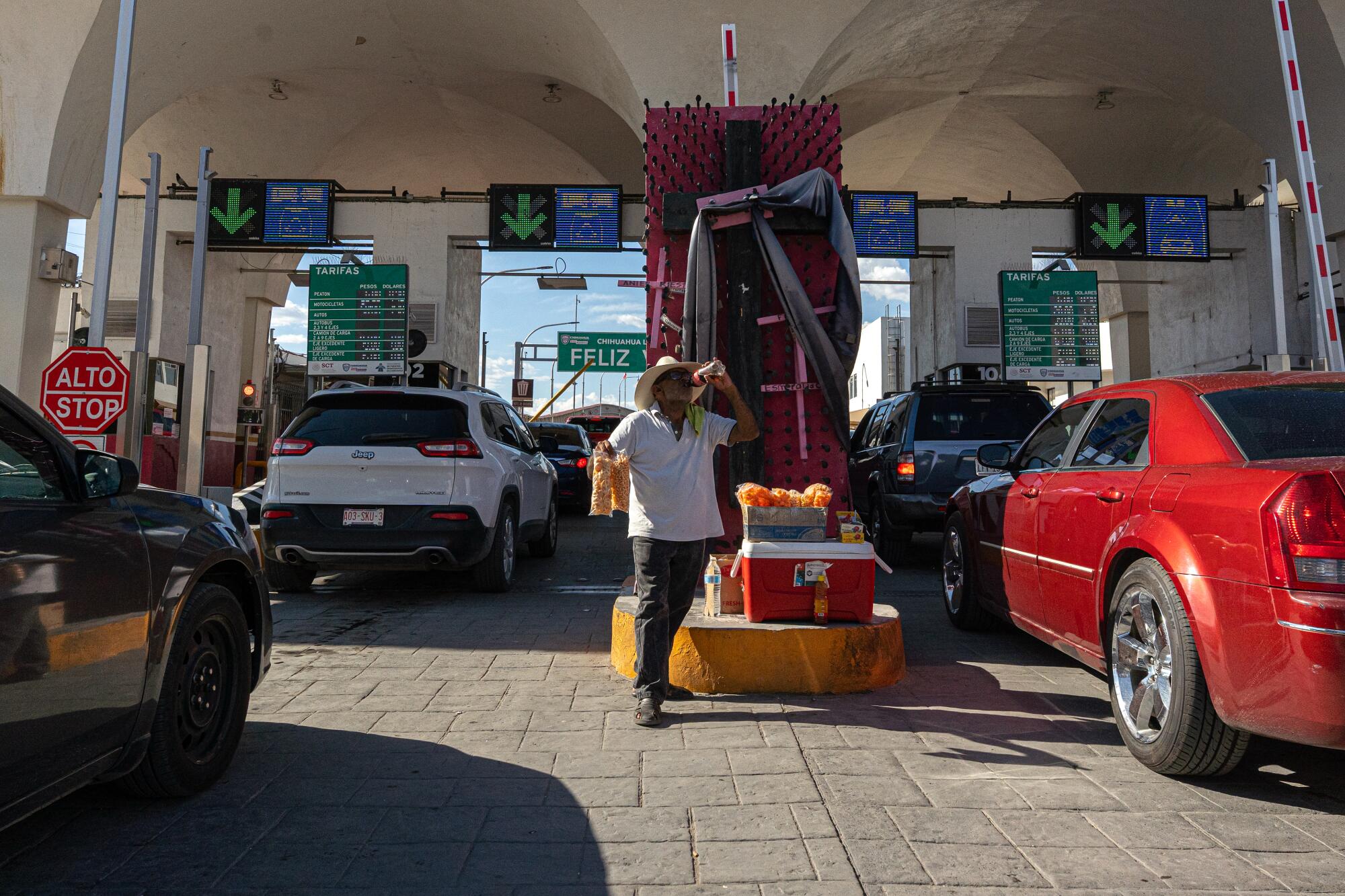
EL PASO, TEXAS — Juan Ortíz trudged through 100-degree heat along the U.S.-Mexico border, weighed down by a backpack full of water bottles that he planned to leave for migrants trying to cross this rugged terrain.
Only there hadn’t been many migrants of late.
When Ortíz started water drops in this especially dangerous stretch of desert near El Paso nearly two years ago, he sometimes encountered dozens of people trying to reach the U.S. in a single afternoon. Now he rarely sees any. Border crossings began falling during the final months of President Biden’s term, and have plunged to their lowest levels in decades under President Trump.
“It’s dramatically different,” Ortíz said, the desert silent except for the crunch of his footsteps in the sand and the whir of a Border Patrol helicopter overhead. “Migrants no longer have any hope.”
These borderlands surrounding El Paso were long a place of risk but also opportunity. Migrants chasing the American dream crossed by the tens of thousands annually, sometimes dodging federal agents and often seeking them out to ask for asylum.
But Trump’s immigration crackdown — a total ban on asylum, a mass deportation campaign and the unprecedented militarization of the border — has altered life here in myriad ways.

Motorists drive into Mexico on Thursday at the Paso del Norte International Bridge, which links El Paso, Texas, with Juárez in the Mexican state of Chihuahua. .
Across the Rio Grande from El Paso in the Mexican city of Ciudad Juárez, shelters once hummed with life, rich with the smell of cooked stews and the chatter of people plotting their passage to the U.S.
Today those shelters are largely empty, populated by migrants stranded in Mexico when Trump took office, and others who were in the United States but decided to leave, spooked by policies designed to instill fear.
Maikold Zapata, 22, had been one of the lucky ones.
He entered the U.S. last year via CBP One, a government app that helped more than 900,000 migrants make asylum appointments at ports of entry. Zapata worked as a landscaper in El Paso, sending most of his earnings to his family back in Venezuela but occasionally splurging on a steak dinner or a visit to a water park with friends.
What kept Zapata up at night was a looming court date for his immigration case.
Since Trump took office, Zapata had heard about federal agents showing up even at routine immigration hearings and taking migrants away in handcuffs. He was afraid of being arrested and sent to a detention facility like the so-called Alligator Alcatraz in Florida, or to a far-away country — perhaps El Salvador or South Sudan, where authorities have shipped U.S. deportees in recent months.
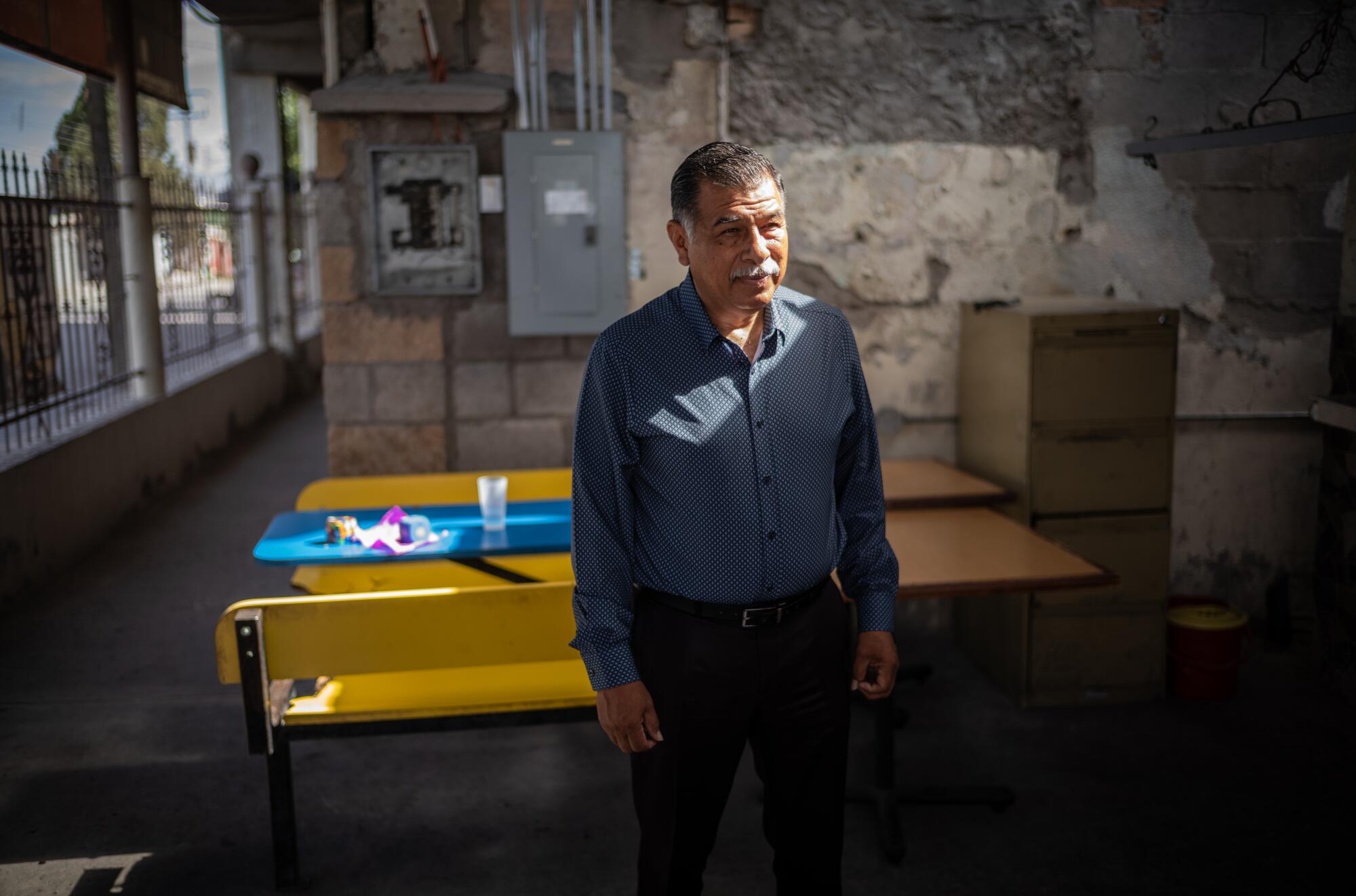
Pastor Francisco Gonzalez Palacios, at the Albergue Vida shelter he runs in Juárez, says the number of migrants coming there has plummeted in recent months.
“Imagine arriving in Africa with no documents and no money,” Zapata said. “No.”
Missing his early July court date was also not an option, since the electronic bracelet on his wrist allowed immigration agents to track his location.
So Zapata stuffed his few possessions in a backpack and walked south over the U.S.-Mexico border bridge, abandoning his asylum claim and the dream he had worked his way across two continents to achieve. He plans to return to South America, likely to Colombia, where his mother is living. “I’ll go back, working the whole way again.”
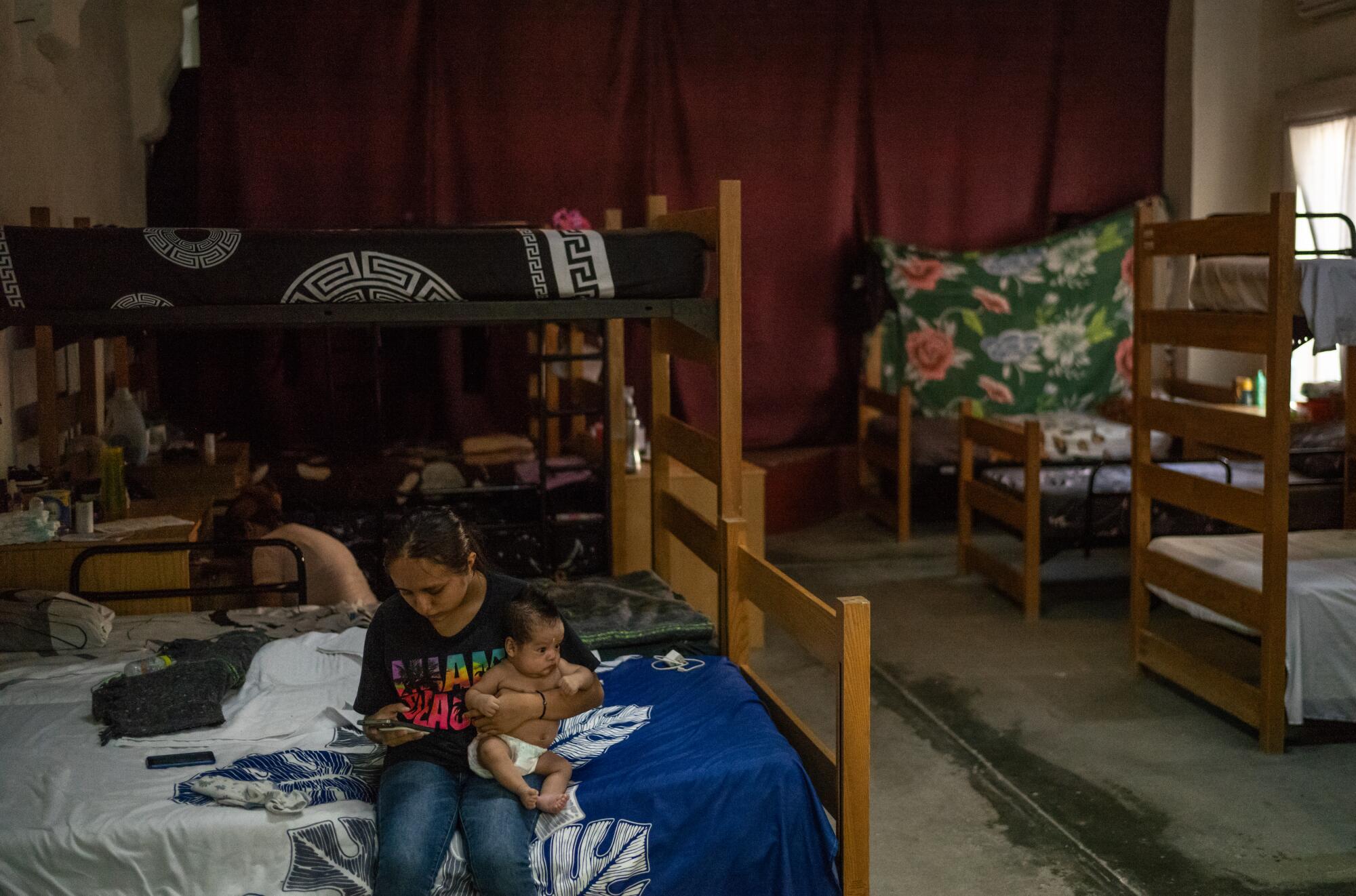
A migrant holds her child at Oasis del Migrante, a small shelter for migrants in Juárez.
For now he is living at Oasis de Migrante, a small shelter in downtown Juárez, where he has befriended another Venezuelan who made a similar choice.
Richard Osorio, 35, decided to leave the U.S. after his husband landed in immigrant detention. Osorio, who worked in home care for the elderly, said it felt like only a matter of time before immigration agents captured him: “I was filled with fear.”
He hopes that his partner’s attorney can persuade the U.S. to deport the man to Mexico, and that he and Osorio can make a life there.
The vast majority of migrants languishing along the border never made it to the United States.
Eddy Lalvay got close. He was 17 when he and his 5-year-old nephew, Gael, arrived in Juárez last year. Originally from Ecuador, they were trying to reach New Jersey, where Gael’s mother lives.
But before they could cross, they were detained by Mexican authorities, who sent them to a government shelter for minors.
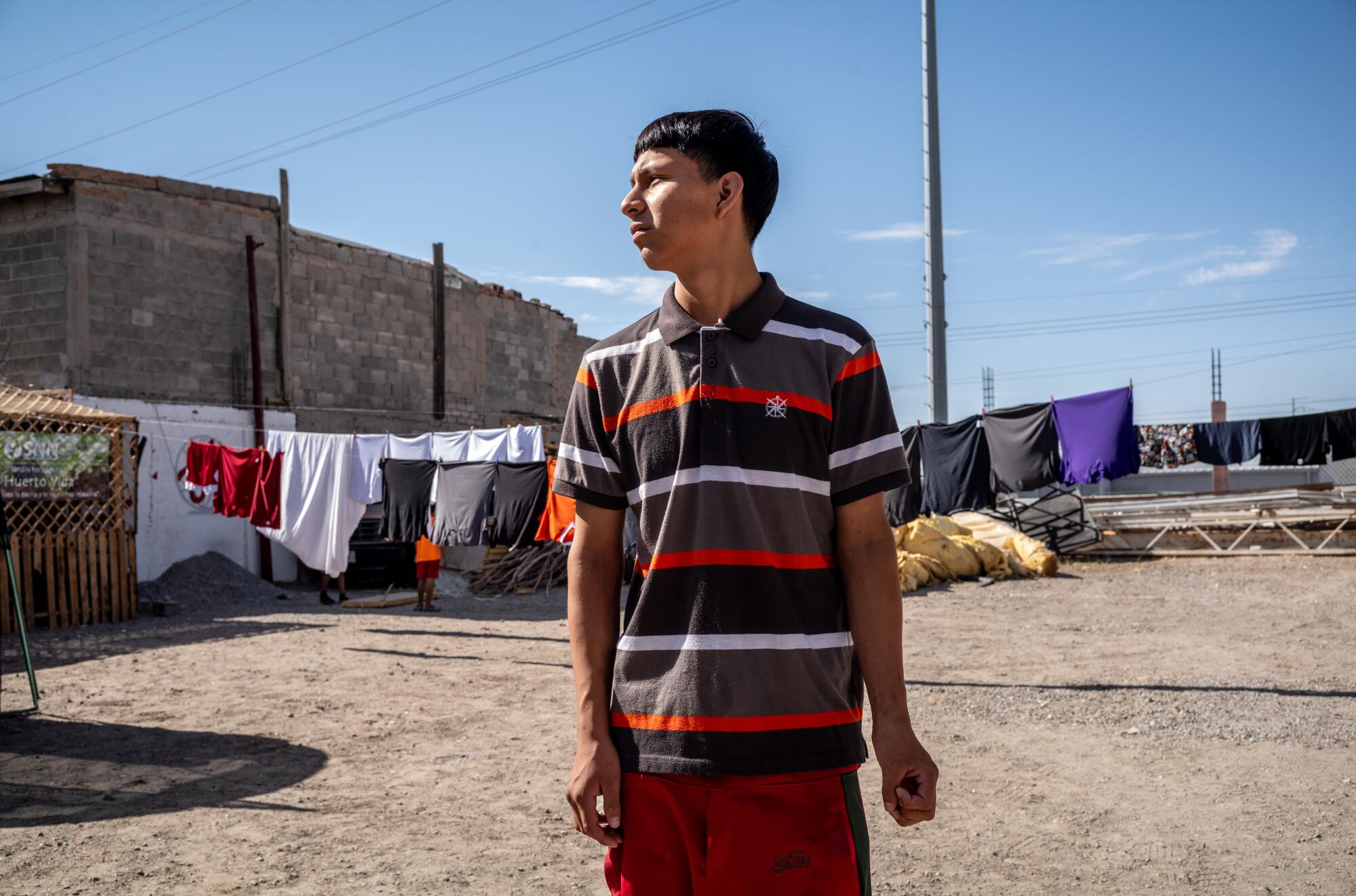
Eddy Lalvay, at the Albergue Vida shelter in Juárez, arrived at the border with his young nephew a year ago.
Lalvay was released when he turned 18. But Gael remains in custody, where he recently turned 6, and authorities say they will release him only to a parent or a grandparent.
“I’m trying to be strong, but I feel awful,” Lalvay said on a recent afternoon as he sat at another shelter in a working-class neighborhood boxed in by sprawling industrial parks.
Francisco González Palacios, a Christian pastor who runs the facility and leads a network of faith-based shelters, said the number of migrants housed by the network has dropped from 1,400 to 250 in recent months. “Nobody is coming from the south,” he said.
Some shelters and nonprofit groups providing legal or humanitarian assistance to migrants may have to close, he said, because many were indirectly funded by the U.S. Agency for International Development, which Trump shuttered.
He tells the migrants gathered at his shelter to rethink their goals now that their “plan A” — a life in the U.S. — is out of reach.
“Look for a plan B,” he says. “Stay awhile, start to work. God will help you.”
But other Trump policies are hurting the economy in the region, limiting opportunities from migrants.
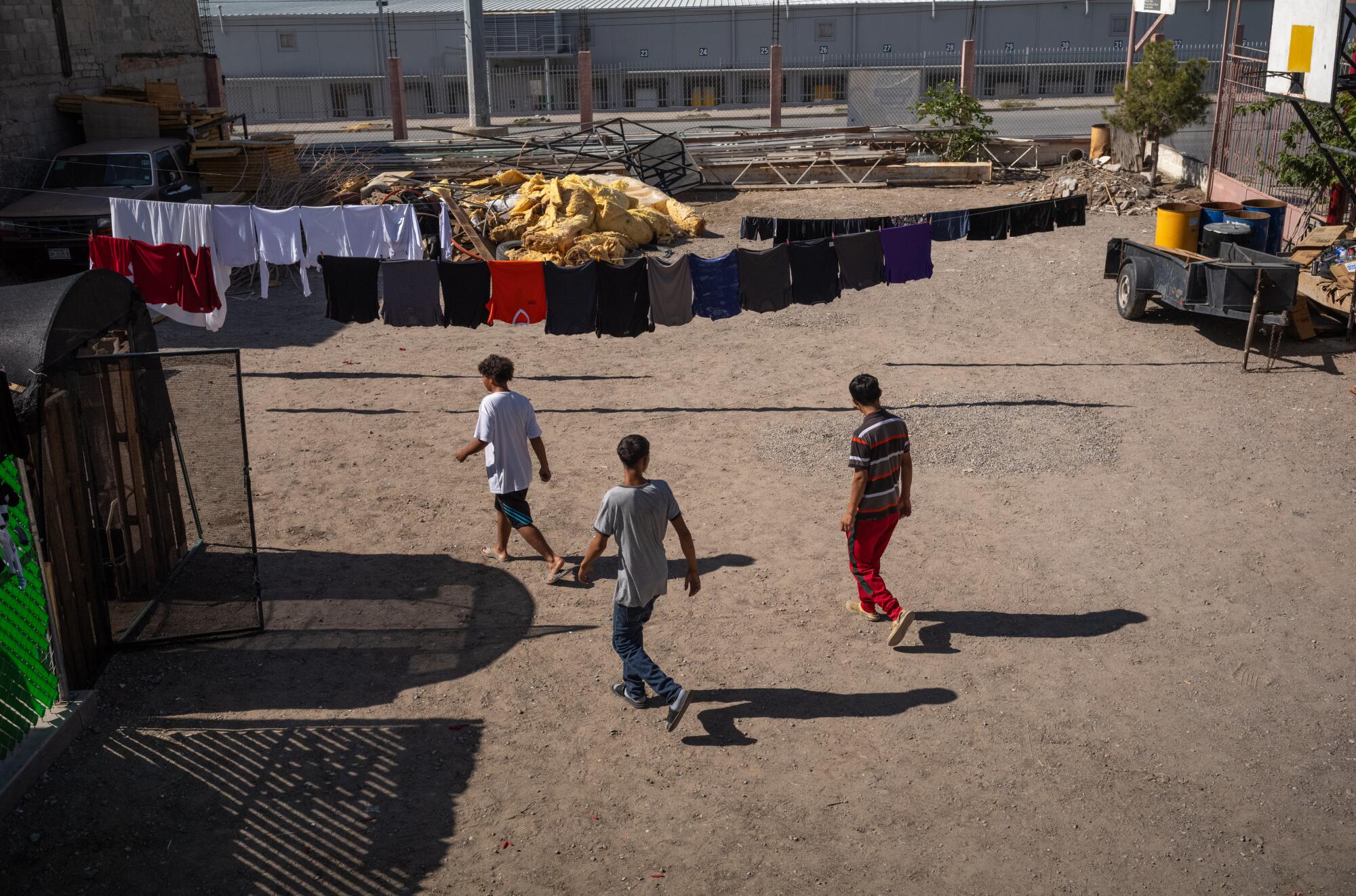
Migrants walk in the yard at Albergue Vida shelter in Juárez.
Juárez has long drawn Mexicans from poorer parts of the country who come to work in its factories, which boomed under the North American Free Trade Agreement, churning out auto parts and other goods destined for the U.S.
But Trump’s on-again, off-again threats of tariffs on goods from Mexico have stunned industry in the Juárez area, with factories laying off thousands of workers.
“We’re in the middle of tremendous uncertainty,” said María Teresa Delgado Zarate, vice president of INDEX Juárez, a trade group. About 308,000 workers are employed in factories today, she said, down from 340,000 a few years ago.
Mexican Juan Bustos, 52, recently lost his assembly line job making auto parts. Most days, he lines up at 6 a.m. outside factories that say they are hiring to try to get new work.
“It’s not easy like it was before,” he said.
So much of life in Juárez depends on decisions made in Washington, he said. “He changes his mind minute to minute,” Bustos said of Trump. “We’re at his mercy.”
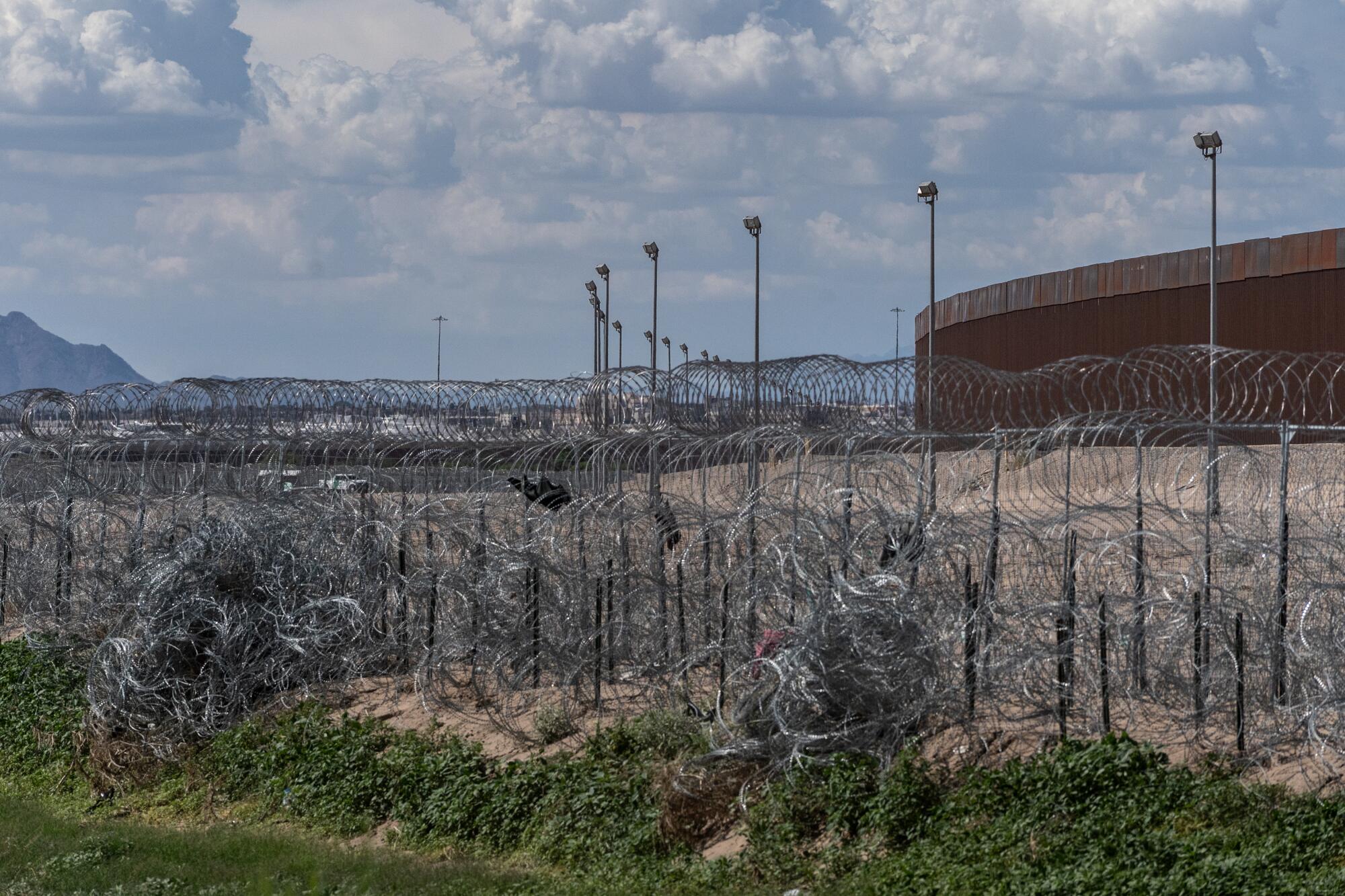
Viewed from the Mexican side of the international boundary, barbed wire marks the border dividing Mexico and the United States.
On the U.S. side, industry is also reeling from the tariff uncertainty.
Jerry Pacheco, who operates an industrial park in Santa Teresa, N.M., a few miles west of El Paso, said several companies that planned new projects there have pulled out since Trump took office.
His park abuts a new militarized zone that stretches 200 miles across a vast expanse of New Mexico. Another 63-mile-long zone has been established along the border nearby in Texas.
The Pentagon, which made the designations, has deployed some 9,000 active-duty troops to the border as part of Trump’s directive to expand the military’s role in reducing migrant crossings. Migrants who enter the new “national defense” zones while crossing the border are being detained by U.S. troops, charged with trespassing and turned over to immigration authorities.
It’s part of a broader militarization of immigration enforcement in this stretch of border.
U-2 spy planes have been flying missions in the skies. At the nearby Army base of Ft. Bliss, the U.S. is constructing a new 5,000-bed immigrant detention camp.
The U.S. has also pushed Mexico to keep migrants from reaching Juárez and other border cities, and Mexican troops have ramped up enforcement in recent years. Migrant advocates blame those policies on a deadly fire at a detention center in Juárez in 2023 that killed 40 migrants and injured 27.
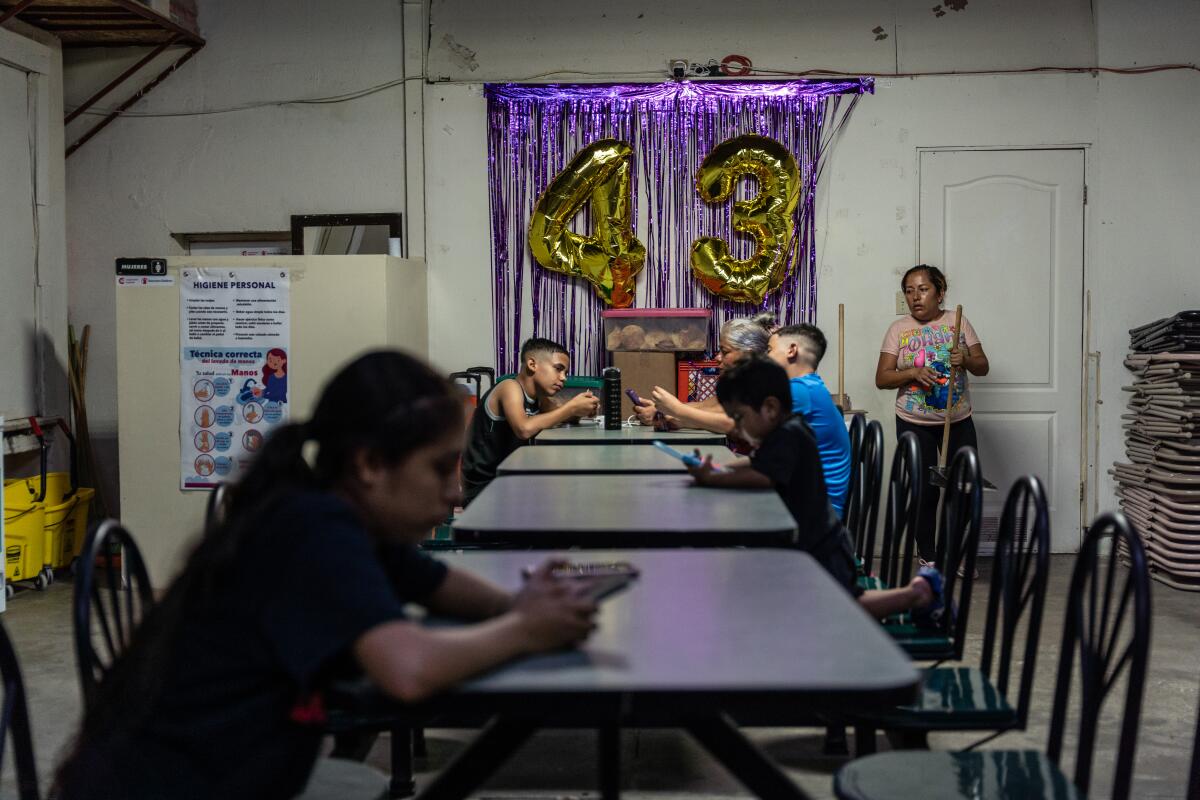
Migrants pass the time at Oasis de Migrante shelter in Juárez.

Bunk beds are jammed into a room at the Albergue Vida shelter in Juárez because the shelter once accommodated scores of migrants each month.
Ortíz, the activist, used to traverse the part of the border that has been turned into a national defense zone, leaving water for the migrants who crossed. But on a recent afternoon, while heading out to check on a water tank, he was stopped by Border Patrol agents who warned him he was trespassing on military land.
The buildup of troops at the border and Trump’s changes to the asylum system have made it nearly impossible for migrants to cross, Ortíz said. In June, there were fewer Border Patrol encounters with migrants than in any month on record, according to the White House. On the day with fewest encounters, border agents apprehended just 137 people across the entire 2,000-mile long border.
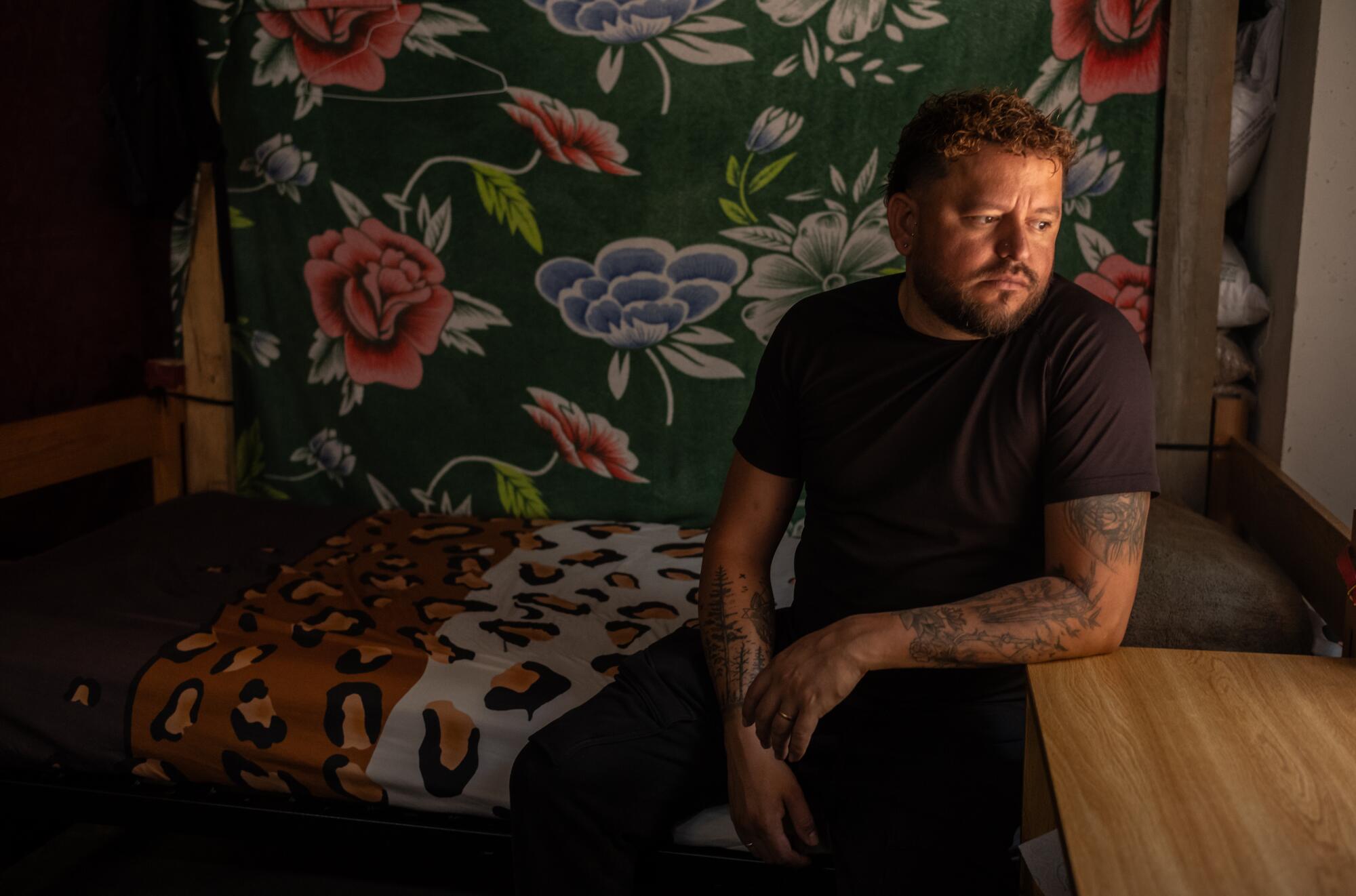
Richard Osorio is now staying at the Oasis de Migrante shelter in Juárez. Osorio, who is from Venezuela, decided to leave the U.S. after his husband landed in immigrant detention.
But Ortíz is convinced that migration levels can’t stay this low forever. There are too many jobs that need filling north of the border, he said, and too much poverty and strife south of it.
This region has been a site of migration since pre-colonial times, he said. El Paso, which means “the pass,” got its name from Spanish explorers who arrived in the late 16th century and established a trade route here leading from Mexico City to Santa Fe.
Movement, he said, is part of our nature.
“You will never be able to fully stop human migration,” Ortíz said. “You never have and you never will.”
Those most desperate to cross will find a way, he says. And that will probably mean paying smugglers even larger sums and taking riskier routes.


